by Dr. M | Jan 30, 2018 | Cataracts, Education, Exam, Experience, Floaters, Glasses, Glaucoma, LASIK, Mark Moran, Medical Eye Care, Office, Patient Care, Surgery

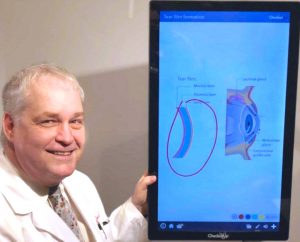
Dr. Moran explains about dry eye and tear film.
New Patient Education Screens in the Exam Rooms.
Dr. Moran knows that an informed patient makes the best health care choices, which is why we take the time to make sure that you have all the information you need to make the right choices for you and your family.
As part of our commitment to patient education, we have recently installed education screens in our exam rooms. Dr. Moran’s goal has always been to give patients the information they need to maintain healthy vision. The addition of these screens takes us to the next level in increasing patient understanding.
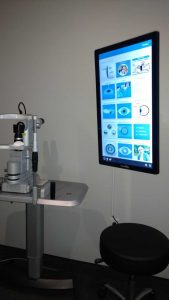
Patient education at our fingertips!

It’s best to Show & Tell!
Now during your exam, not only can we explain what is happening with your vision, we can show you too! We can choose images and videos to help better explain treatment options. The best part is that these boards are interactive! Dr. Moran can draw and write notes on them to help you better understand your eye health and safety.
Educational topics include:
- Dry Eye
- LASIK & PRK
- Cataracts
- Glaucoma
- Macular Degeneration
- Understanding Vision: Myopia, Hyperopia, Astigmatism & Presbyopia.
And we are doing our part to save trees, too!
With this new technology, we can take the information from the screen and email it directly to you! We also have the ability to print directly from the screen as well.
As always, if you have any questions about caring for your eyes, please ask our staff. We are happy that we can now SHOW & Tell! To schedule your next appointment call or text 610-628-2022.
by Dr. M | Jan 8, 2018 | Cost, Education, Exam, LASIK, Mark Moran, Medical Eye Care, Patient Care, Surgery

Dr. Mark Moran has been doing LASIK for almost 20 Years.
I’ve been doing LASIK surgery since the turn of this century, so I keep up on LASIK news. I hadn’t seen deeply discounted LASIK at unbelievable prices in quite a while. But recently, I have started to get emails offering me LASIK at $299 per eye.
As a physician practicing in today’s environment, I have a responsibility to ensure my patients are getting a fair price. When an EpiPen can cost $500, and drug prices can increase from $7.50 to $750 overnight, I must make sure that I consider price options when making recommendations for my patients.
In the past, knowing what it costs to operate a LASER and the cost of performing a safe and accurate LASIK procedure, it was evident that there weren’t many LASIK surgeries being performed at the advertised price of $299. It costs far more than $299 for the doctor to perform LASIK, not to mention the equipment costs for accurate testing and measurements.
I had been told by patients who had investigated the $299 LASIK offer, that the $299 LASIK wasn’t available for them. It seems as though $299 was just the starting price. The cost escalated soon after the consult started. This was second-hand information so I never really got the specific facts until now…
Recently I got an email offer which finally included the “fine print.” I’m going to break it down.
Following is a breakdown of the disclaimer on their low-cost offer:
“Prices based on prescription: up to -1.00 $299,”
The first phrase in the disclaimer is the main reason why so few $299 LASIK procedures are done. A -1.00 prescription is probably about 20/40 vision. You would still be able to drive an automobile both during the day and night. (There are stronger restrictions for nighttime driving.)
The pricing detail continues:
“…-1.25 to -2.0: $1099;
…-2.25 and up as well as all hyperopic and/or greater than -0.50 diopter of astigmatism: $1799.”
Then the other shoe drops. If you have a half of diopter of astigmatism that raises the price to $1799, which is now approaching a reasonable price for a standard LASIK procedure. Seventy percent of all prescriptions written in America have some astigmatism. Which means if there if there is a significant enough prescription that needs correction and one is given, three-quarters of the time it’s going to have astigmatism. The price has now hit the $1800 per eye mark.
“Individual results will vary.”
I got a chuckle from this portion of the disclaimer. Pretty obvious observation.
“Candidacy determined by an independent doctor located within or adjacent to the LASIK Vision Institute’s (LVI) facility. All procedures performed by an independent surgeon. Punctal plugs, assurance plans and other technologies available at additional cost. This offer may not be combined with other offers. Other conditions may apply.”
And then there’s the “additional cost” disclaimer. So even with the maximum quoted price of $1799 there are still add-on charges to consider.
The take-home message: you’re not likely to get LASIK (or do you need LASIK) at $299. There may be small variations in price for LASIK surgery by area doctors, but the costs for procedure tend to be similar.
The smart consumer considering LASIK surgery should be looking for other factors in making their decision. Choose your surgeon based on:
- Level of Experience,
- Successful Patient Outcomes,
- Equipment and Technology Used,
- Patient Satisfaction & Reviews,
- Overall Quality of Care.
caveat emptor.
by Dr. M | Dec 21, 2017 | Exam, Floaters, Laser, Mark Moran, Patient Care
If floaters are getting in the way of your vision, there is a solution.
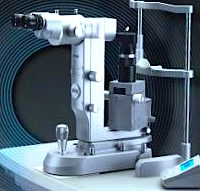
Laser treatment can clear floaters from your vision.
Laser Treatment for Floaters is now available at Moran Eye Associates. This painless, in-office procedure, can remove and reduce floaters from your vision. It is covered by most medical insurances.
The goal of this treatment, known as Vitreolysis, is to achieve a functional improvement so that you can return to day-to-day activities without the hindrance of floaters.
What happens during the procedure?
In an exam room using the YAG Laser pictured above, Dr. Moran will apply laser light to evaporate the floaters. The laser pulses convert the floater molecules into a gas, removing or reducing the floater so that it no longer disturbs your vision.
Before the procedure, your eye will be numbed with anesthetic drops. Then, a contact lens will be placed on your eye so that Dr. Moran can clearly see inside your eye while looking through a special microscope.
During treatment, you may notice small, dark specks or shadows. The laser will make a clicking sound as the pulses of light are applied. Each treatment session will take about 20-30 minutes, and it may take two, or possibly three sessions, in order to achieve the best result.
Are you a candidate for Laser Floater Treatment?

Dilated Eye
Before you schedule the laser procedure, Dr. Moran will need to see you for a dilated evaluation to determine your eligibility for vitreolysis treatment.
Considerations include your age, how long you have had the floaters, and the characteristics of the floaters themselves.
Are there different types of Floaters?
Yes. Floaters are the small pieces of debris that float in the vitreous (clear fluid) of the eye. Floaters can appear long and stringy, cloud-like or round.

Cobweb Floaters
Fibrous Strand Floater: Most common in young people, this thin, dense floater can appear as dots, or stringy cobwebs, which are a result of clumping of the collagen in the eye. Depending on the size and location of this floater, it may be treatable with vitreolysis.

Cloud-Like Floaters
Diffuse Floaters: This cloud-like type of floater is caused by the natural aging of the eye. Due to the scattered, wide-spread nature of this floater, it may require multiple treatments for best results.
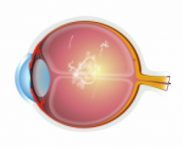
Weiss Ring Floater

Weiss Ring Floater: This large, ring-shaped floater is located safely away from the lens and the retina, which makes it a good candidate for this procedure.
If you have more questions about this procedure, set up an appointment for an evaluation to see if we can make your vision floater-free 610-628-2022.
by Dr. M | Oct 24, 2017 | Education, Experience, Mark Moran, Patient Care
 Mark E. Moran, D.O., M.S.H.I., F.A.O.C.O
Mark E. Moran, D.O., M.S.H.I., F.A.O.C.O
Dr. Mark Moran has added another degree to his already impressive set of academic accomplishments. He recently completed a Master of Science in Health Informatics (MSHI) at Drexel University. We are very proud of our graduate!
This area of study provides knowledge of how to use information technology efficiently and responsibly to improve health outcomes.
Dr. Moran explains why pursuing this degree was important to him.
“I’ve always had a dual career in both medicine and computers. I pursued my medical degree to allow me to practice medicine. At the same time, I continued my computer career without an official degree. The online Drexel program allowed me to formalize that computer experience, without taking time away from seeing my patients. With the integration of computers and informatics in medicine today, the two career paths have merged into one.”
As a practicing physician, Dr. Moran brought a unique first-hand perspective to his course of study. He was able to apply his knowledge directly to his practice, Moran Eye Associates, in Bethlehem, PA. Now, his patients benefit not only from his medical experience, but also from his awareness of how healthcare information can be managed and shared for better patient care.
This newly accredited Drexel program was developed with the following mission statement:
The mission of the MSHI program is to advance national healthcare goals by preparing health informatics professionals to exercise leadership in an increasingly patient-centered and data-driven environment.

Dr. Moran is a Drexel University Graduate
The program pursues this mission by offering an interdisciplinary, broad-based curriculum that encourages engagement with industry and fosters both research-based and experiential learning.
For more information on this degree program, click to visit the Drexel University website: Drexel University MSHI



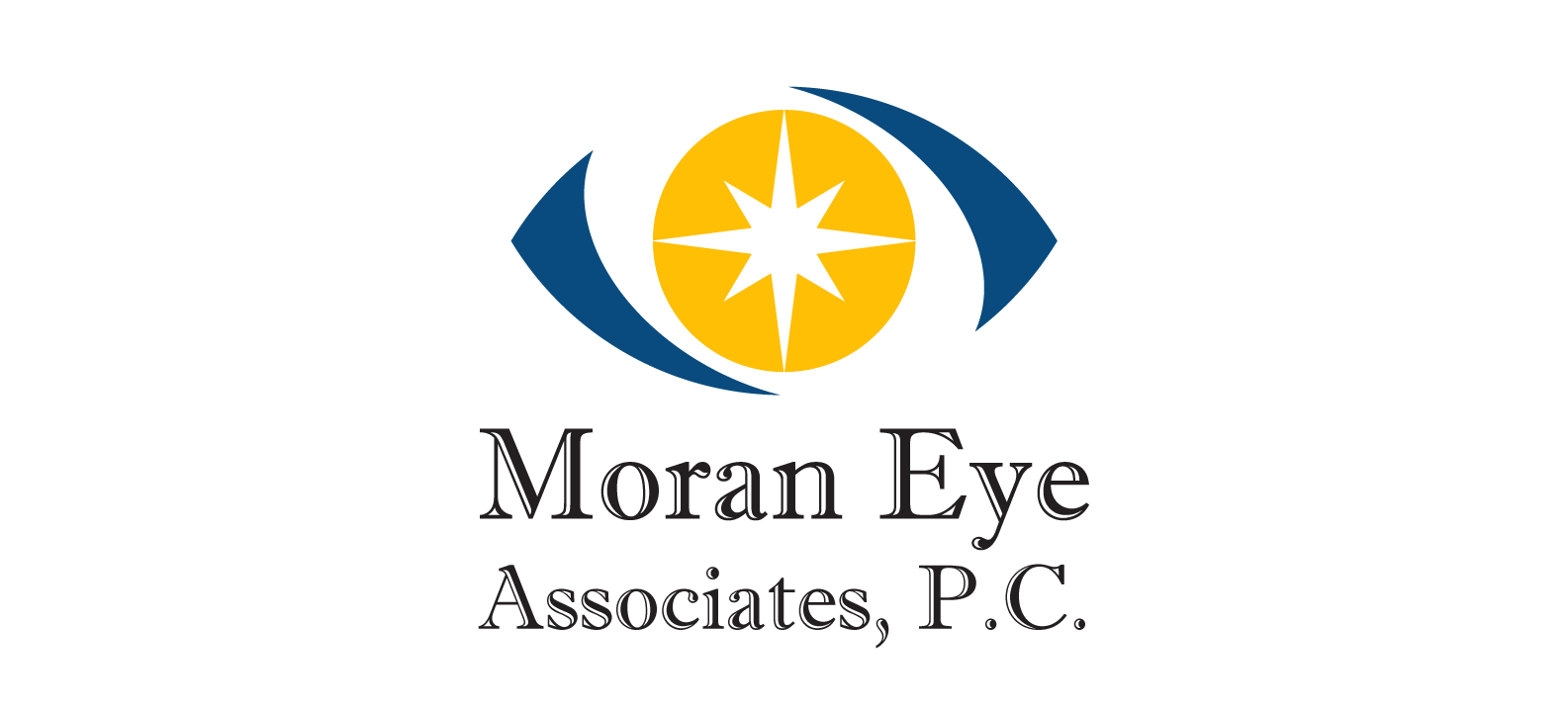










 Mark E. Moran, D.O., M.S.H.I., F.A.O.C.O
Mark E. Moran, D.O., M.S.H.I., F.A.O.C.O